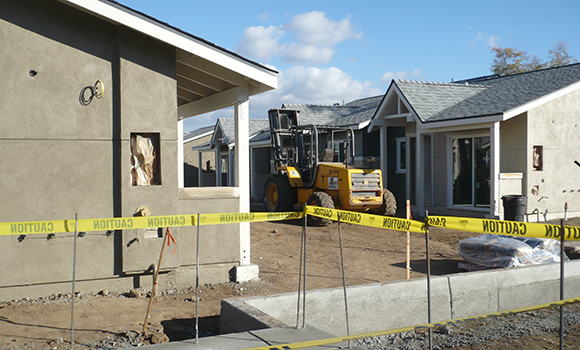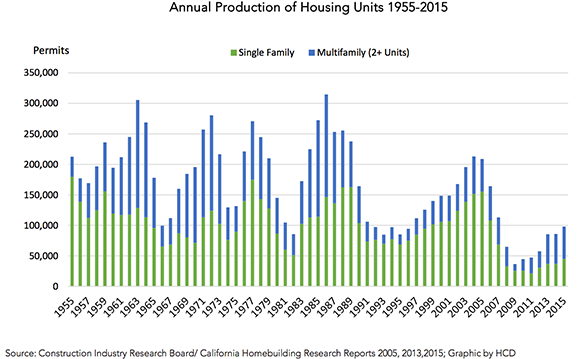
Affordable housing complex in Fresno (Photo Credit: Great Valley Center/Flickr)
Much has been written, said, and tweeted about California’s housing crisis.
And if you’re lucky, you got to hear CA Fwd’s president and CEO, Jim Mayer, speaking with insight into the crisis in a “big picture” presentation at the San Joaquin Valley Affordable Housing Summit on Thursday.
How’s does it look for struggling Californians? One of the quickest ways to show the depth of the problem is to compare rent and income levels.
Thanks to this chart via a CALMatters explainer, you can see how rental costs are soaring while incomes have not kept pace.
Some recent numbers to think about: Zillow’s July 2017 research puts California’s median rental price for the state at $2,695 and the median house price at $505,800, which is up 7.4 percent over the past year.
Not only does this push more people into poverty and out of the state, there are hidden costs as well. A McKinsey report on the crisis says $53 billion in household spending is lost annually to high housing costs and $85 billion in construction activity goes missing annually due to underdevelopment.
And then there’s the need for increasing the supply of housing for all income levels, both market rate and affordable (a goal of the California Economic Summit’s One Million Homes Challenge).
Here’s a look at housing construction levels in California since 1955…

Put those numbers up against population and job growth in booming areas, say in San Mateo County, where 19 jobs were created between 2010 and 2015 for every new housing unit built, and you get an idea of the scope.
But, it’s not just about building more. It’s also about building in the right places, so California can develop affordable, equitable and sustainable communities.
What’s sustainable about building a lot more housing? An example of building with California’s ambitious climate goals in mind comes from that same McKinsey report. The authors estimated that increasing housing density within a half-mile of transit stations could produce between 1.2 million to 3 million housing units over a 20-year timeframe. (These areas, the report notes, represent only 0.15 percent of the California’s total land mass.)
So, what can we do now?
Housing leaders from the California Economic Summit recently encouraged the Governor and Legislature to act on a package of housing bills to provide crucial funding for affordable housing and also test innovative ideas to streamline building. They also called on lawmakers to take a further look at some unresolved issues that exacerbate the issue, like the rising impacts of local fees on development and a lack of incentives for jurisdictions to build more.
At today’s San Joaquin Valley summit, Mayer of CA Fwd is laying out three key elements communities must consider as they look for ways to solve the growing affordability crisis:
1) Leadership and a broad commitment about how communities want to grow, what it’s going to look like, and what outcomes they want—from economic security and upward mobility to fiscal sustainability and healthy environments. Without a clear vision, California communities will continue to be stuck in a neverending cycle of infighting over every single new project.
2) A fairer way to pay for new housing—and a departure from today’s practice of simply loading up new housing with fees (which, in turn, drive housing costs up even more for renters and new homeowners). To get more communities to say yes to housing, communities need to work with the state to craft fiscal incentives that provide legitimate alternatives for funding local services, including additional property tax revenue.
3) An accountability system that includes new way of ensuring communities with specific visions for growth — and new ways to pay for it — are held accountable for their actions.
The good news is there are communities innovating and strategizing ways to close the housing gap in their region. We’re talking about them in our housing series, A Way Home For CA, and we’re looking forward to discussing more concrete ways forward at the 2017 California Economic Summit, happening in San Diego on November 2-3 (Registration and Program Info).

